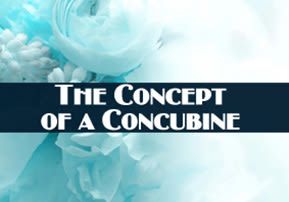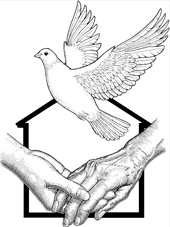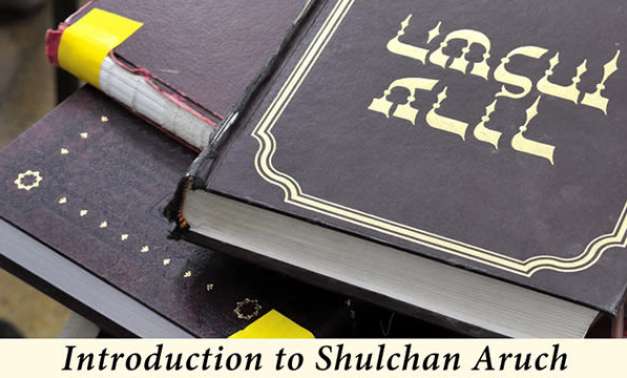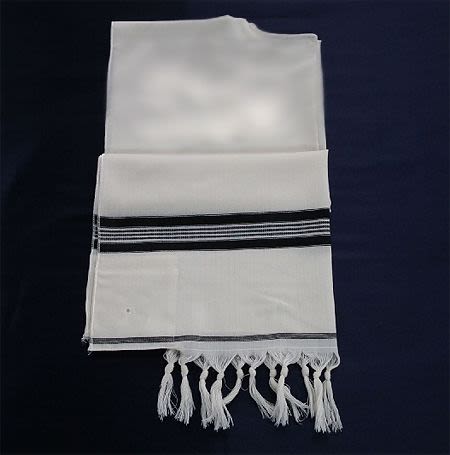
The Concept of a Concubine
Mistress, lover, kept-woman, common-law wife? What exactly is the concept of a concubine in Judaism? How does Jewish law regard such a relationship?

Halacha: The Concept of Pilegesh (Concubine)
Let us examine more closely these attempts to popularize pilegesh relationships as forms of premarital, non-marital and extramarital relationships permitted by halacha. What is the true contemporary halachic status of pilegesh? Rambam explains that the word pilegesh is comprised of the words “Pi Shagal,” which indicates a woman who is used in both domestic and “intimate” ways. Alternatively the word pilegesh is related to the Hebrew/Aramaic palga isha, “half a wife,” and the Greek pallax/pallakis, “mistress” or “lover-girl.” In contemporary Israeli Hebrew, the word pilegesh is often used as the equivalent of the English “mistress” – i.e. the female partner in extramarital relations even when these relations have no legal recognition.
In the Talmud, a pilegesh is defined by Rav Yehudah in the name of Rav as a woman married without kidushin and without a ketubah (Babylonian Talmud, Sanhedrin 21). However, Rambam (Hilchot Ishut 1:4) defines a pilegesh as a woman without a ketubah butwith kidushin. Kidushin, whichmeans sanctified, is part of the marriage ceremony and reflects the holiness of Jewish marriage. During the ritual of kidushin, the man sanctifies his woman and designates her for himself and no other. According to Rambam, after the Torah was given, one who has relations with a woman without kidushin is punished with lashes by Torah law. A pilegesh without kidushin, is an institution exclusively reserved for Jewish kings. An ordinary person may not take a pilegesh, or engage in any type of relations outside of a marriage (Rambam, Hilchot Melachim 4:4).
The Shulchan Aruch, explains that if a man lived with a woman the way of znut, not for the sake of kidushin, she is not considered married. This is the case even if he designated her for himself and lived with her for the sake of intimate relations exclusively between the two of them. In this case, [the Rabbis] compel him to take her out of his home (Shulchan Aruch, Even HaEzer 26:1).
The Rema (Rabbi Moshe Isserless, ibid.) quotes the Ra’avadwho maintains that a pilegesh is a woman who isdesignated to one man, and this is permitted as long as she goes to the mikvah at the appropriate times. It is important to note that even the Rabbis, who do not consider pilegesh to be an infringement on a Torah commandment, may still hold that pilagshut violates the positive commandment of the Torah that a man must marry by way of kidushin. The mitzvah for a man to marry is derived from Devarim 24:1. See Yad, Ishut 1:2; R. Shelomo Luria, Yam Shel Shelomo, Yevamot 2:11; Resp. Tzitz Eliezer 1:27, part 18.
The Rema concludes his comment by quoting the Rambam, Rosh, and Turwho rule that the practice of pilegesh is prohibited and liable for the punishment of lashes for transgressing the Torah prohibition of “There shall be no prostitutes of the daughters of Israel” (Devarim 23:18).
Likewise, the great Torah sage, Rabbi Yonah of Gerona writes: Our rabbis taught that the verse, “Do not prostitute your daughter to cause her to be a harlot, lest the land fall to harlotry, and the land become full of lechery,” comes to warn that a man should not give over his unmarried daughter for intercourse except in marriage… and a pilegesh without, ketubah and kidushin was only permitted to the king. (Gates of Repentance, part 3:94) The halachic position in case of a safek d’Oraita (the possibility of transgressing a Torah command) is to always be strict. Therefore, the accepted practice is to follow the ruling of the Rambam and to prohibit the practice of pilegesh. Rav Yakov Emden concludes that he would not permit the practice of pilegesh unless two other halachic authorities signed with him to permit it, and thus it has remained the practice not to allow it. (See Resp. Igerot Moshe, Eben HaEzer 1:55, where the prohibition of pilagshut is simply assumed).
Contemporary Halachic Responsa Regarding Pilegesh
Beyond the pilegesh, a 1979 teshuvah of the Central Conference of American Rabbis Responsa Committee provides textual references detailing rabbinic responsa intended to prevent “casual” sexual relationships between consenting adults and unmarried partners who have made a long-term commitment to each other. There can, after all, be no greater long-term commitment than that made between a properly married couple. There are several halachic responsa aimed at ensuring that no sexual contact takes place even between a man and his betrothed bride prior to their wedding. For this reason, kiddushin (betrothal) and nisuin (marriage) became fused into the single ceremony that still remains in place. One of the important motivations behind this enactment was the desire to prevent sexual contact prior to marriage, even for those who had formally committed themselves to each other through kidushin. It plainly follows that the contemplation of a sexual relationship for those who, no matter the depth or the longevity of their feelings, had made no formal commitment to each other would have been absolutely out of the question. Unmarried Jews must not live together, and certainly not to engage in sexual relationships, even if their personal commitment to each other is profound. The accepted standard is evidenced by the passage in the betrothal blessing (birkat erusin), “He has prohibited to us our betrothed spouses.” R. David Ibn Zimra stated the prohibition most clearly when he declared, “At present time a woman is permitted to no man except through chupah, sheva berachot and ketubah” (Resp. Radbaz 4:225; 7:33).
Rabbi Yaacov Ariel, Chief Rabbi of Ramat Gan, commenting on the issue of pilegesh explains that the rabbinical authorities who permitted the institution of pilegesh were not talking about the kind of temporary relationships found among young people today, but rather, lifelong commitments. Regarding this important distinction, he emphasizes that all halachic authorities agree that passing sexual relationships between unmarried people are forbidden, as a form of whoredom, even if the woman goes to the mikvah. Rabbi Ariel cites that, according to Rashi and the Gaon of Vilna, the ancient practice of pilegesh was, in fact, accompanied by a kosher marriage ceremony, or kidushin, so that the daughters of Israel should not fall into harlotry.
On the modern orthodox Nishmat Women’s Health and Halacha website a woman asks whether intimacy before marriage is permitted by the Torah through the status of “pilegesh.” The answer given is that pilegesh is forbidden by the Torah, as the Rambam understands the Torah prohibition of kedeshah (prostitution) to prohibit any sexual relations outside of the context of marriage. Therefore, there is no room for a woman to acquire the status of pilegesh nowadays. As challenging as it may be to refrain from physical relations prior to marriage, restraint is demanded by halacha. Halacha has a positive view of physical intimacy and its potential for joy and holiness exclusively within the halachic framework and commitment of marriage.
In the same vein, Rav Peretz Moncharsh answers a sha’alah regarding a divorced woman who is engaging in intimate relations with a man she is not married to. Would the institution of pilegesh be a legitimate halachic option for such a couple? The Rabbi answers that a pilegesh is not an option, because the majority opinion of the poskim is that it only applies to a king or to a marriage without a ketubah, but not to an extra-marital relationship. While she may consider her “friend” a princely fellow, halachah certainly does not accord him royal status.
Rabbi Zev Leff being asked the similar question, answers on an audio recording, that living together without kedushin is a Torah prohibition. A pilegesh relationship involving a man and a woman who live together without being married is actual znut (harlotry). Therefore, in order not to promote znut, the Rabbis prohibited single women from immersing in the mikvah. Although living with a niddah is a much more serious prohibition than living with a single woman after her mikvah, the Rabbis still considered it so important to minimize premarital/extramarital relations, that it took precedence over minimizing the transgression of sexually active unmarried couples. Rabbi Leff concludes that there is no heter (permission) for unmarried couples to live together, as we say at the marriage canopy: “Who forbade us those betrothed to us, but permitted us those married to us by means of chupah and kidushin”
The Pilegesh Trend – Pursuit of Instant Gratification
The real problem facing us today is that the sanctity of marriage has broken down, even among the religious. The Kabbalist Rabbi Eliahu Leon Levi said that “One does not have to offer Kabbalistic explanations to understand that to renew the practice of pilegesh today would destroy the institution of Jewish marriage. A pilegesh was something exclusive to the times of the Bible.” Rabbi Yaacov Ariel, concurs: “Our duty as rabbis is to encourage the holy institution of marriage, not to ape the licentiousness of the Western world, which places egotistical satisfaction before everything else.” Unfortunately, those “spiritual leaders” who promote pilegeshut have seemingly forgotten that the main reason of our life is to perform mitzvot and thereby elevate our lower inclinations in the service of Hashem. It seems to me that the main motivation for the attempt to halachically legitimize the institution of pilegesh, is in order to cater to the yetzer hara (selfish inclination) of religious people, who have become greatly influenced by the pleasure seeking of Western Society, and its pursuit of instant gratification. The problem is, that many of those practicing what they call a pilegesh relationship, validate their individual yetzer harah, believing that their actions are totally halachically justified. This reminds me of the Jewish gay movement. Before that movement became popular, a man, born with an abnormal sexual disposition, was aware that acting upon his tendencies, violates the Jewish practice. However, today some people do not see a contradiction between being gay and being Jewishly observant.
Nowadays, you can find gay “Rabbis,” gay minyans (prayer quorums), and even gay “married couples.” In a similar manner, certain “Rabbis” and “spiritual leaders” wearing the orthodox garb with long beard and peyot, promote the social institution of pilegesh. They may quote and misquote all kinds of halachic sources to legalize their position, most often because of their personal desire to take a pilegesh for themselves. It is alarming that these “Rabbis” have no shortage of followers who welcome the opportunity for instant corporal gratification through minimum effort, without having to make any commitment. We may have compassion for a single man who is unable to control himself and live in long-term celibacy. When such a man gives in to his inclination, he is fully aware that his behavior is far from the ideal, but that unfortunately, he can’t help himself. However, it is much more alarming when pleasure-seeking and lust turns into a trend, disguised by the so-called pilegesh relationship, without the slightest feeling of shame.
 Spiritually Disadvantaged Women’s Lack of Self-Respect
Spiritually Disadvantaged Women’s Lack of Self-Respect
I believe that the underlying reason for the growing number of Jewish women willing to become pilagshot, is an estrangement of women from their innate feminine nurturing strengths. A spiritually healthy Jewish woman yearns, by her very nature, for the long lasting, committed relationship of marriage and raising a family. For this reason, it was unnecessary for the Torah to command women to get married and become fruitful. Nowadays, unfortunately, influenced by Western society’s competitive career-race, pleasure-seeking, and the nonchalant, noncommittal attitude, certain Jewish women have lost their sense of true Jewish femininity. Being detached from their spiritual feminine essence causes these spiritually disadvantaged Jewish women, to lose their sense of dignity and self-respect. They are unaware how they degrade their Divine Image by allowing their bodies to be available for men, who are unwilling to make a lifelong commitment to them, and unite with them fully through both body and soul. I call on all believing Jewish women to start believing in themselves, and start to consider themselves fully deserving of their true soul-mate’s total love and commitment. May Hashem bless all single Jewish women to find committed Jewish marriage partners worthy of them!










7/23/2010
A kashya and a teretz! Rebbitzen Siegelbaum —
When I read your article about pilagshim, I immediately saw a kashya on the Rambam and Rabbeinu Yona; “If pilagshim are reserved for kings, then how could a Levi, not a king, take a pilagesh, the famous ‘Pilagesh of Giv’ah’ in Sefer Shoftim?” Then the teretz hit me — “That’s where the tragedy started! If he had properly married her, perhaps they would have had shalom bayis, and the terrible civil war might never have happened!See the awful result of znus!
7/23/2010
Rebbitzen Siegelbaum —
When I read your article about pilagshim, I immediately saw a kashya on the Rambam and Rabbeinu Yona; “If pilagshim are reserved for kings, then how could a Levi, not a king, take a pilagesh, the famous ‘Pilagesh of Giv’ah’ in Sefer Shoftim?” Then the teretz hit me — “That’s where the tragedy started! If he had properly married her, perhaps they would have had shalom bayis, and the terrible civil war might never have happened!See the awful result of znus!